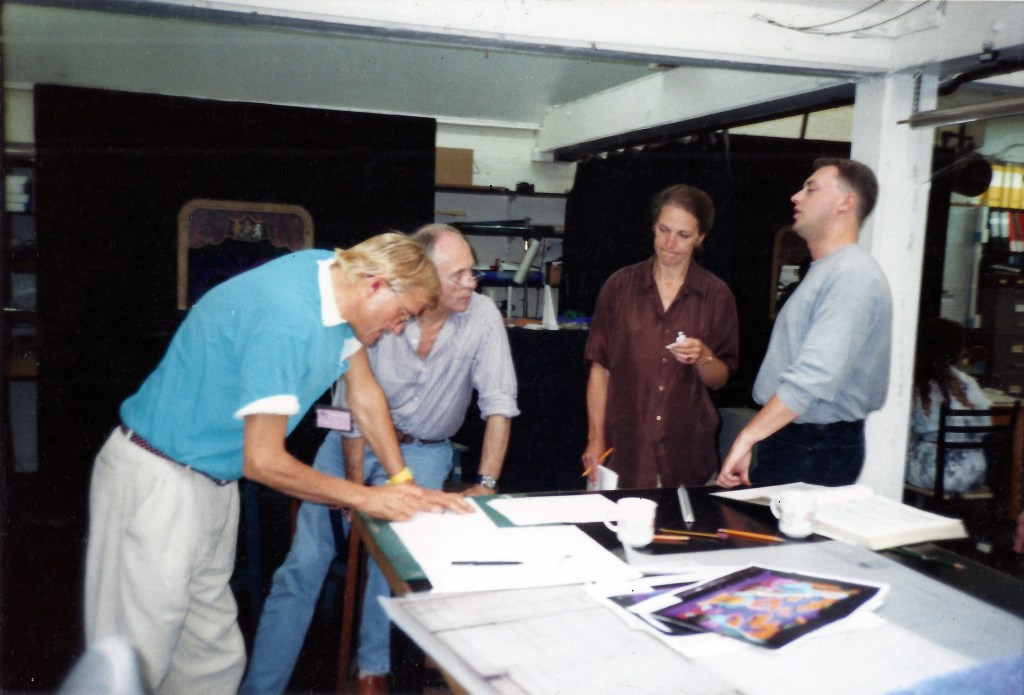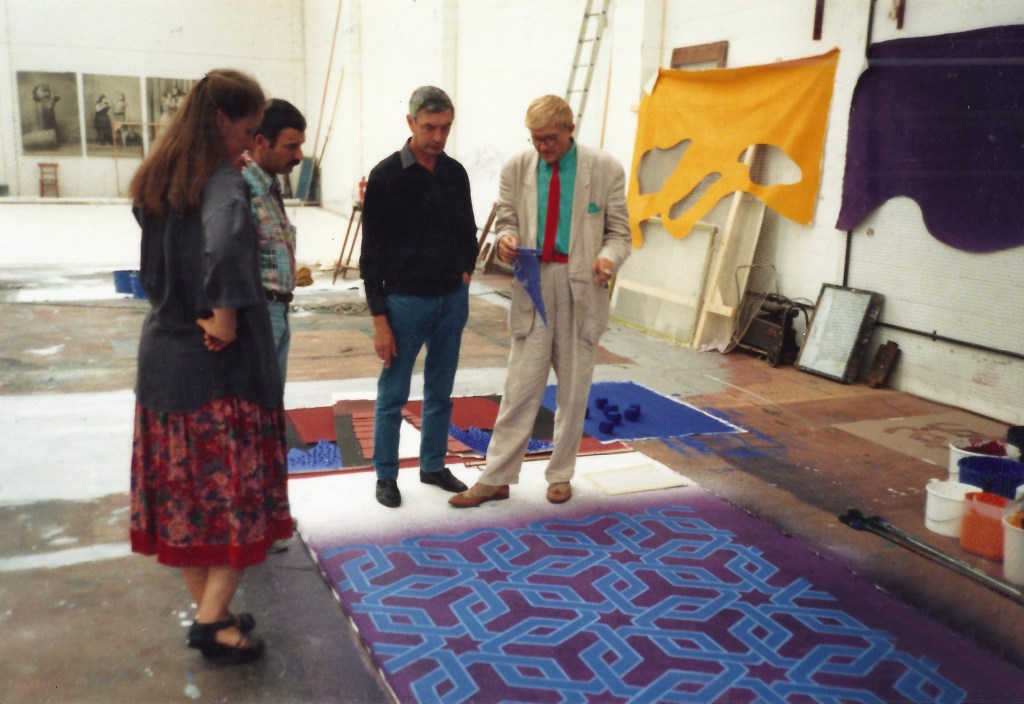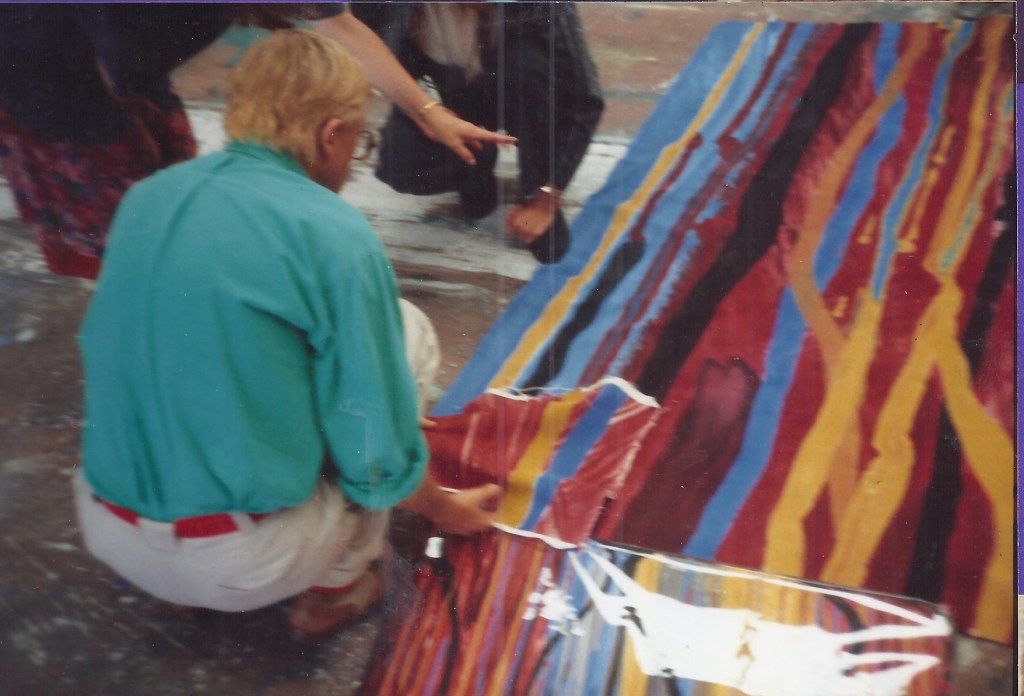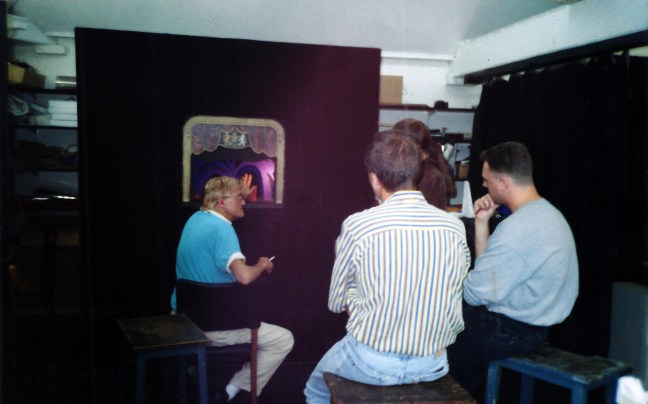The 1985 Hockney Paints the Stage exhibition at the Hayward Gallery made a huge impression on me as a child. When I came to choosing a topic for my ‘A’ Level art project, and I saw that Hockney was designing a new production for the Royal Opera House, I knew what I had to do.
The new production was Richard Strauss’s Die Frau Ohne Schatten, directed by John Cox, with whom Hockney had already worked on several operas including the celebrated Rake’s Progress, a harmony of music and scenography that makes it one of the most perfect operatic designs I’ve seen.
I wrote to the Opera House and Susan Usher, head of production, very generously invited me to watch a design meeting. At the end of that meeting I was told I could come to a further meeting attended by Hockney. A few days later I was in the production office at Covent Garden, a few feet away from one of titans of my teenage world, with his blue and red hearing aids and a personal supply of camomile tea bags. By this stage there was a close-to-final model but it wasn’t Hockney’s own. He’d made one at 1:8 scale. The ROH had then made the rather more accurate 1:25 version we were now looking at. At one point it became apparent that he had to remake the Emperors’ throne. ‘I can’t work this size – too niggly for me!’ he declared. He ended up making it at 1:8 when he got back to LA, and sending it over to be scaled down.
Hockney is of course primarily known for two-dimensional work and the design wasn’t miles from paintings he was doing at the time. Many of the elements were effectively painted cut-outs. But in the model box he was very interested in the three-dimensional space both visually and in relation to acoustics. He was also preoccupied by how the set changed over time. He’d made a video of his model, showing how the set changes should happen with the music. Curtains only came in between acts – all the other changes were designed. He was keen for me to see the video but first, he said, I needed to get to know the music. He recommended the Wolfgang Sawallisch recording, which of course I duly bought. It is indeed stunning.
I was invited back the following day to join a visit to the scenic workshop in Stratford. It was a fascinating experience. The libretto was influenced by a range of Indian, Arabic, Persian and Chinese fairy tales, and colours and patterns from these cultures were incorporated in the design. In one of the photos you can see Hockney looking at such a pattern and telling the scenic artistic it was too sharp and needed toning down. He was also keen to maintain the painterly quality of the model, though when it came to the dotted surfaces so familiar in his paintings at that time, painted reproduction wasn’t enough. After much discussion this effect was achieved by the application of lots of rounded blocks.
The thing I remember most vividly from that visit, however, was the sight of the artist, standing on an unfinished wooden bridge, singing away. (I think it was that sunrise theme from Act III.) Afterwards, he insisted on taking me back to Mile End Tube station in his taxi, giving me the chance for an exclusive interview. I hope I didn’t ask too many silly questions.
I’m not sure if it was then that he talked about colour. One of the main characters in Die Fraue is Barak the Dyer, who Hockney saw as his way in to the opera, linking him to his own craft. ‘Colour is his business’, he said of Barak (but perhaps thinking of himself), ‘He wants to make the world a brighter place’. Hockney wanted to avoid projecting colour onto white surfaces, describing that as ‘boring’, and seemed similarly averse to using white light on a coloured surface: the end result, colour projected onto colour, produced images of great intensity, along with strange illusions of depth. Another way in to the opera for him was the quest for fertility; the opera’s narrative driving force. Hockney saw this as having a parallel with creativity.
This was in the summer. The story picks up again in the autumn, when a revival of Rake’s Progress came to Sadler’s Wells. I managed to get in to the fit up for that, and then came with my parents to see a performance. Hockney remembered me and I had the slightly surreal experience of introducing him to my mum and dad. Given Die Frau’s main theme he was amused that Susan Usher was due to give birth around the time the opera was opening. ‘It works!’ he declared.






A few weeks after that I was back at the Opera House for the fit up. During the lunchbreak, as I was eating my sandwiches, Hockney wandered onto the stage. He was at a loose end for a few minutes, and asked if I wanted to see that video. Of course I did. It wasn’t just that he’d filmed all the scene changes with the music using the 1:8 model, he’d even worked out the lighting. You can get away with that if you’re famous! It was a strange experience: me on a sofa in his Covent Garden digs, with various assistants bustling around, while the artist knelt on the floor by the VHS player fast forwarding to show me his favourite scene changes. He’d asked for a recording of Haitink rehearsing the score so he could get the timings exact.
The designs still seem to me today to be a highly successful visual expression of the score. This wasn’t just down to the rich colours and organic shapes, even though they were an excellent fit for the gorgeous if occasionally over-indulgent music; it was also about recurring visual motifs – ranging from shapes that hinted at fertility to colour symbolism – which reflected the structure of the music. The designs nonetheless divided critics. I can see why. The sets could dominate and even inhibit the action, and they are rather like a Hockney painting that’s been cut up and put on stage. But, dusting off my old school project and looking at it all once again, I can see why, when I did finally see the finished production, I was so delighted by it. It’s genuinely beautiful. And I’m still slightly amazed by just how generous Susan Usher, David Hockney and their colleagues were.
Oh and I got 30/30 for the project.
This article was written for Blue Pages, the journal of the Society of British Theatre Designers, and published in 2017. Reasonable efforts were made to contact Hockney’s office for permission to publish the photos.
